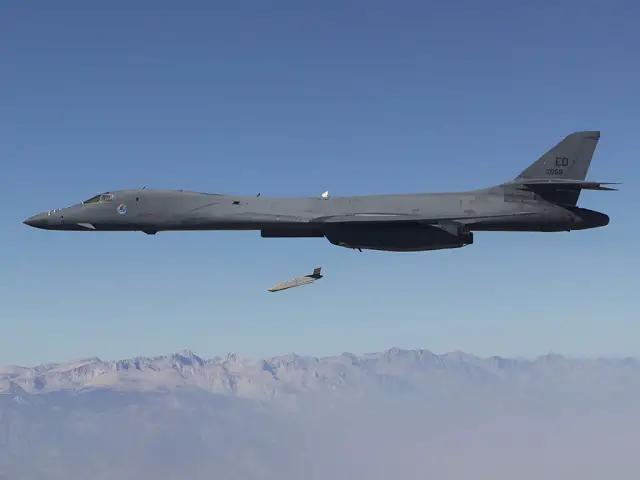Breaking news
Lockheed Martin Conducts Second Successful LRASM Anti-Ship Missile Flight Test.
| 2013
| |
|||
| a | |||
Naval
Defense News - USA |
|||
Lockheed Martin Conducts Second Successful LRASM Anti-Ship Missile Flight
Test |
|||
Lockheed Martin’s Long Range Anti-Ship Missile (LRASM) recently achieved another successful flight test, with the missile scoring a direct hit on a moving maritime target. The test was conducted in support of the Defense Advanced Research Projects Agency (DARPA) and Office of Naval Research (ONR) program. |
|||
 A B-1 bomber from the 337th Test and Evaluation Squadron conducted the mission from Dyess AFB, Tex., to the Point Mugu Sea Test Range off the coast of southern California. Once in position, the B-1 released the LRASM |
|||
Flying
over the Sea Range at Point Mugu, Calif., a U.S. Air Force B-1B bomber
from the 337th Test and Evaluation Squadron at Dyess Air Force Base,
Texas, released the LRASM, which navigated through all planned waypoints
receiving in-flight targeting updates from the Weapon Data Link. After
transitioning to autonomous guidance, LRASM identified the target using
inputs from the onboard sensors. The missile then descended for final
approach, verified and impacted the target. “This test, combined with the success of the first flight test in August, further demonstrates the capabilities and maturity of LRASM,” said Mike Fleming, LRASM air launch program manager at Lockheed Martin Missiles and Fire Control. “The new sensors and legacy JASSM-ER components all performed well during the flight and the missile impacted the target as planned.” LRASM is an autonomous, precision-guided anti-ship standoff missile leveraging the successful Joint Air-to-Surface Standoff Missile Extended Range (JASSM-ER) heritage, and is designed to meet the needs of U.S. Navy and Air Force warfighters in a robust anti-access/area-denial threat environment. JASSM-ER, which recently completed its operational test program, provides a significant number of parts and assembly-process synergies with LRASM, which results in cost savings for the U.S. Navy and Air Force (air- and surface-launched) Offensive Anti-Surface Warfare programs. |
|||
 LRASM in sea skimming terminal flight picture: Lockheed Martin |
|||
The
tactically-representative LRASM is built on the same award-winning production
line in Pike County, Ala., as JASSM-ER, demonstrating manufacturing
and technology readiness levels sufficient to enter the engineering,
manufacturing and development phase to satisfy an urgent operational
need. After a competition in 2009, Lockheed Martin’s LRASM was selected to demonstrate air- and surface-launched capability to defeat emerging sea-based threats at significant standoff ranges. Armed with a proven 1,000-pound penetrator and blast-fragmentation warhead, LRASM employs a multi-mode sensor, weapon data link and an enhanced digital anti-jam global positioning system to detect and destroy specific targets within a group of ships. Link to our recent video interview on LRASM |


























